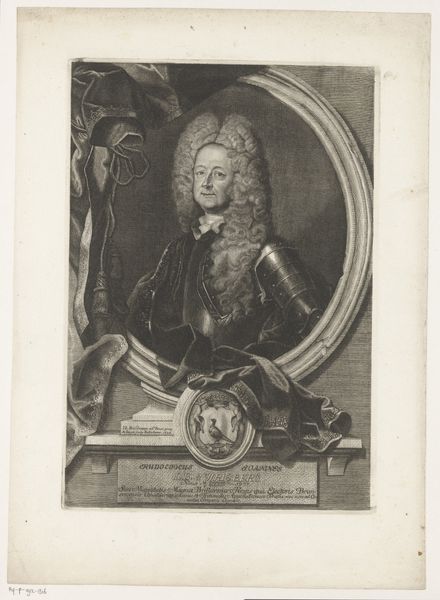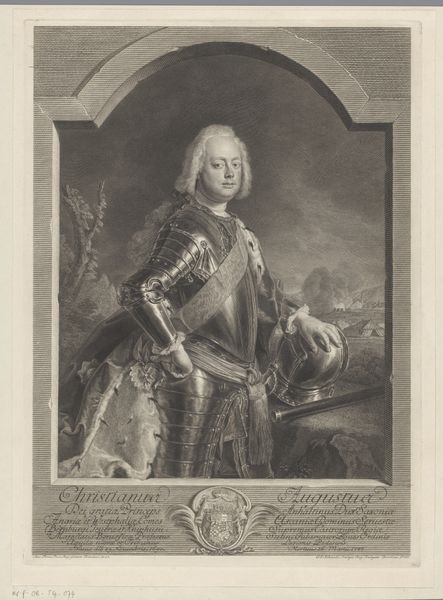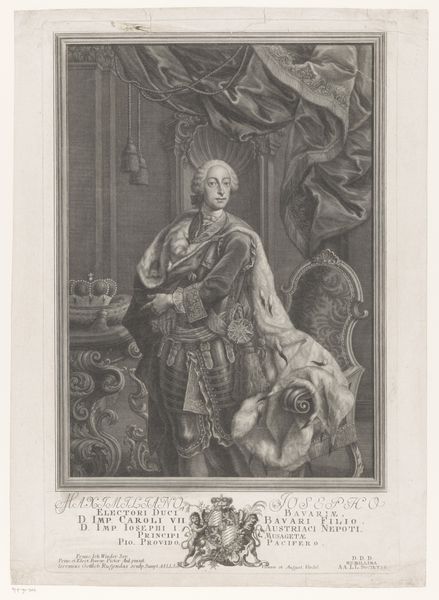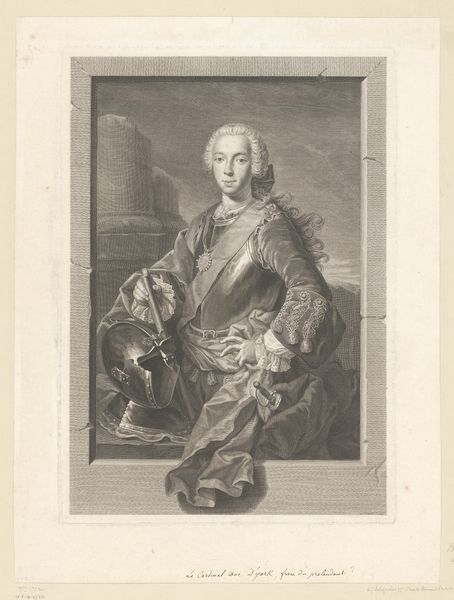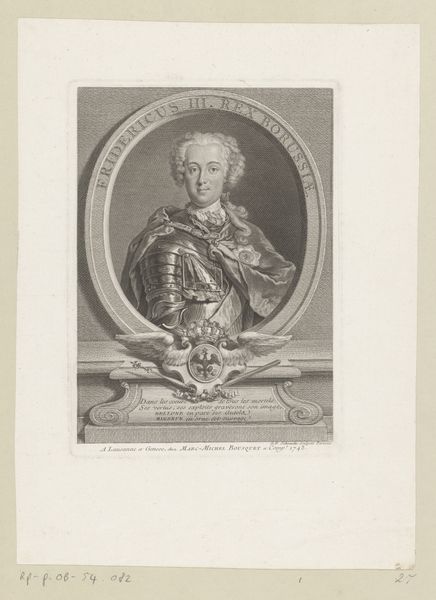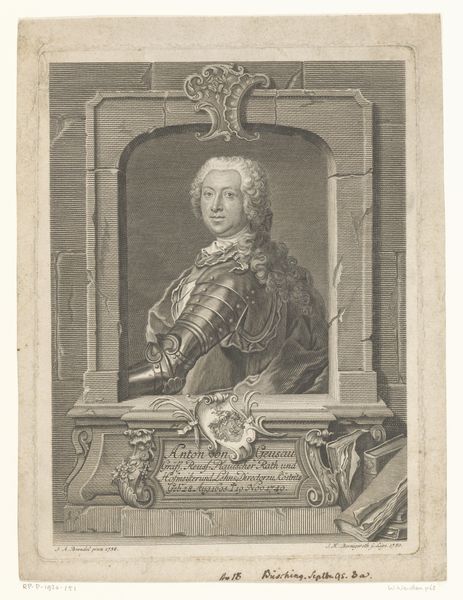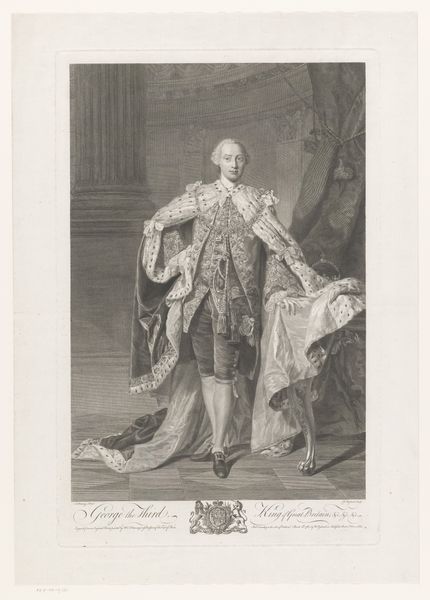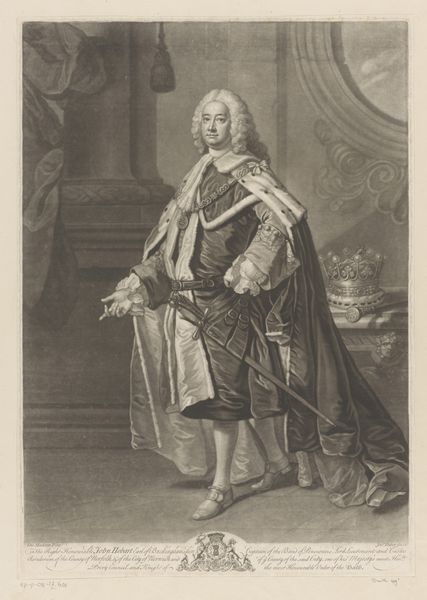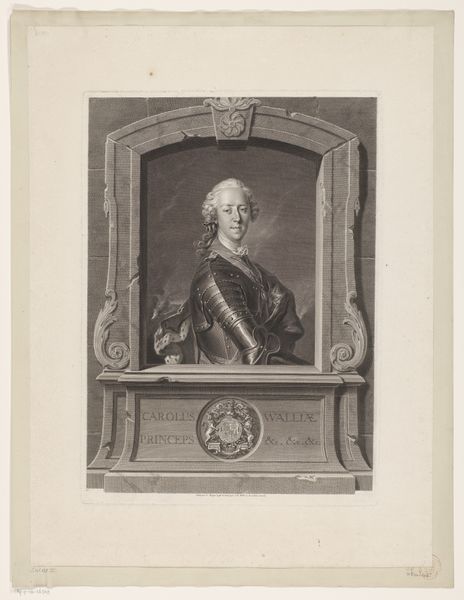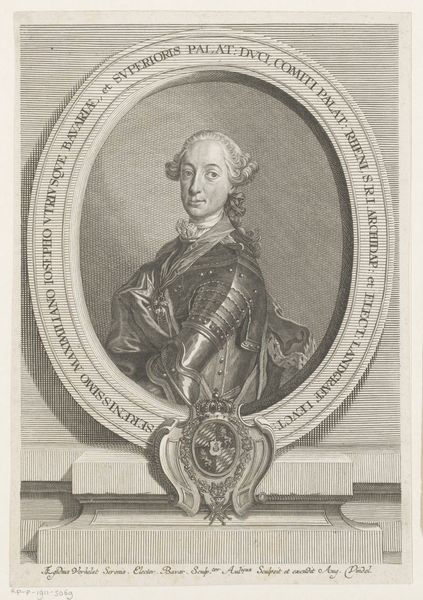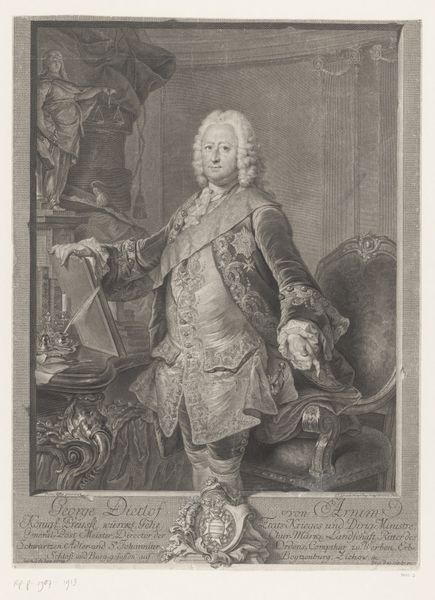
Dimensions: height 496 mm, width 357 mm
Copyright: Rijks Museum: Open Domain
This portrait of Joseph II, German Emperor, was made by Johann Christoph Reinsperger, and is an etching on paper. This was a printmaking process, which uses acid to etch the design into a metal plate, allowing for the production of multiple copies. Look closely, and you can see the textures of the fabrics, from the lace collar to the fur-lined robe. The image is made up of intricate lines and cross-hatching, built up slowly by the artist. This technique allowed Reinsperger to create a range of tones and values, from the bright highlights on Joseph II's face to the deep shadows in the background. Notice how the composition is carefully arranged to emphasize the emperor’s status. On the right of the portrait, the crown of the Holy Roman Empire rests on a cushion, a symbol of power and authority. Etchings like this played a vital role in disseminating images and ideas in the 18th century, and it is a powerful reminder of the labor and skill involved in creating these images, and the power relations they represent.
Comments
No comments
Be the first to comment and join the conversation on the ultimate creative platform.

